9 Herbal Teas For Ovulation Pain
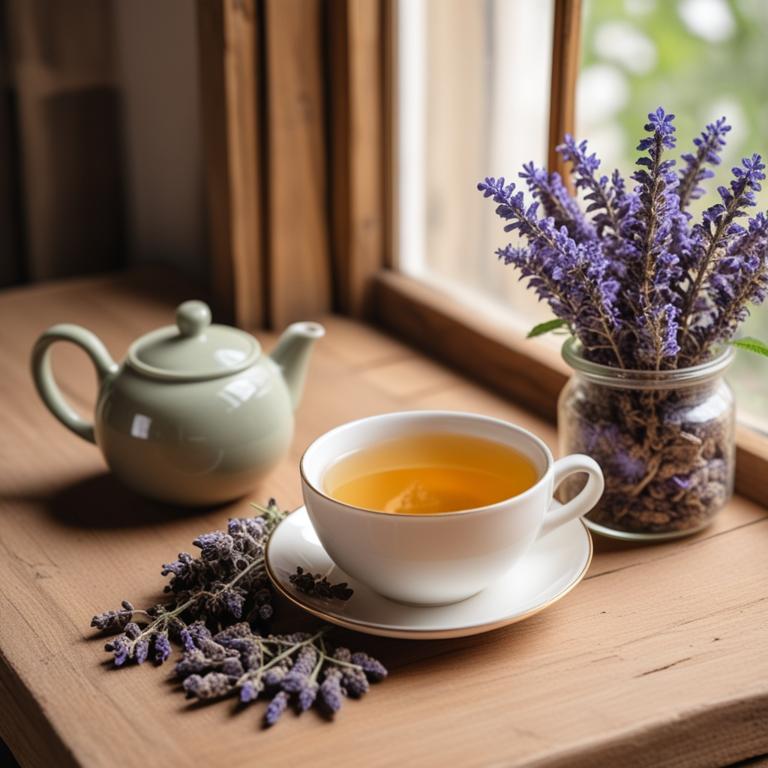
Herbal teas can be a great way to relieve ovulation pain.
Ovulation pain, also known as mittelschmerz, is a common symptom experienced by many women during their menstrual cycle. This pain is caused by the release of an egg from the ovary, which can irritate the surrounding tissues and cause discomfort. Herbal teas, such as those made from Paeonia lactiflora, Zingiber officinale, and Curcuma longa, can help to soothe this pain. Paeonia lactiflora, or peony root, is a natural anti-inflammatory that can help to reduce swelling and ease discomfort. It works by blocking the production of prostaglandins, which are hormone-like substances that cause pain and inflammation. This can help to bring quick relief from ovulation pain. Zingiber officinale, or ginger, has also been used for centuries to relieve pain and reduce inflammation.
It contains compounds called gingerols and shogaols, which have anti-inflammatory and analgesic properties. Drinking ginger tea can help to ease ovulation pain and promote relaxation. Curcuma longa, or turmeric, is another herb that has been shown to have anti-inflammatory properties. It contains a compound called curcumin, which has been shown to reduce pain and inflammation. Turmeric tea can help to ease ovulation pain and promote overall well-being. Drinking herbal teas for ovulation pain can bring many benefits to your life. Not only can they provide quick relief from pain, but they can also promote relaxation and reduce stress. Many herbal teas are also caffeine-free, making them a great alternative to coffee or tea for those who are sensitive to caffeine.
By incorporating herbal teas into your daily routine, you can take a natural and effective approach to managing ovulation pain and promoting overall health and well-being.
- 1. Paeonia lactiflora
- 2. Zingiber officinale
- 3. Curcuma longa
- 4. Cimicifuga racemosa
- 5. Glycyrrhiza glabra
- 6. Angelica archangelica
- 7. Ginkgo biloba
- 8. Angelica sinensis
- 9. Vitex agnus-castus
1. Paeonia lactiflora
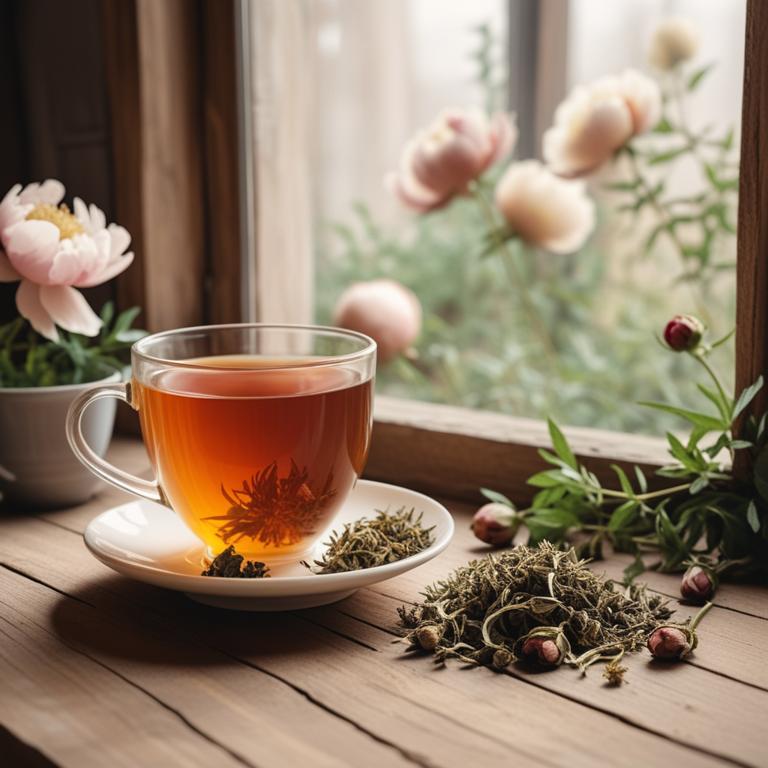
Paeonia lactiflora teas contains flavonoids, phenolic acids, and glycosides as its bioactive constituents.
These compounds have anti-inflammatory properties, which can help reduce pain and discomfort associated with ovulation. The flavonoids, particularly kaempferol and quercetin, have been shown to inhibit the production of prostaglandins, hormone-like substances that can cause pain and inflammation. The glycosides, such as paeoniflorin, have analgesic and anti-inflammatory effects, which can help alleviate cramps and discomfort.
By reducing inflammation and pain, Paeonia lactiflora teas may provide relief from ovulation-related pain.
- Gather 1 cup of fresh Paeonia lactiflora flowers and leaves. You can find them in health food stores or online.
- Measure 1 cup of fresh flowers and leaves and put them in a clean glass jar.
- Add 2 cups of boiling water to the jar and let it steep for 5-7 minutes.
- Strain the mixture into a cup using a cheesecloth or a fine-mesh sieve. Discard the solids.
- Drink 1/2 cup of the tea 2-3 times a day to help ease ovulation pain. Store any leftover tea in the fridge for up to 24 hours.
2. Zingiber officinale

Zingiber officinale teas contains gingerols and shogaols, active constituents that help reduce inflammation and pain.
These compounds have anti-inflammatory and analgesic properties, which can help alleviate cramps and discomfort associated with ovulation. Gingerols and shogaols also have a warming effect on the body, which can help relax the uterine muscles and reduce spasms. The bioactive constituents in ginger, such as gingerol and shogaol, have been shown to inhibit prostaglandins, hormone-like substances that cause pain and inflammation.
By reducing prostaglandin levels, ginger tea may help alleviate ovulation pain and promote a more comfortable menstrual cycle.
- Gather 1 tablespoon of dried Zingiber officinale (ginger) root.
- Boil 1 cup of water in a kettle or pot.
- Add the 1 tablespoon of dried ginger to the boiling water.
- Reduce heat and let it simmer for 5-7 minutes.
- Strain the tea and drink while warm, 2-3 times a day.
Zingiber Officinale Tea on Amazon
FGO Organic Ginger Tea, 100 Count, Eco-Conscious Tea Bags, Caffeine Free, Packaging May Vary (Pack of 1)
Disclaimer: We earn a commission if you click this link and make a purchase at no additional cost to you.
3. Curcuma longa
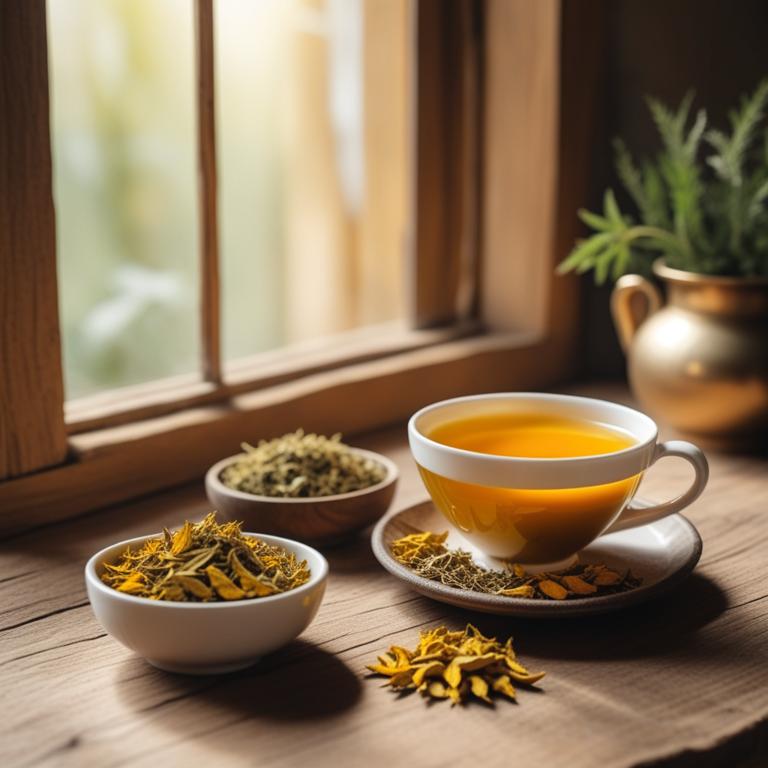
Curcuma longa teas contains a compound called curcumin, which is the main active constituent responsible for its medicinal properties.
Curcumin has anti-inflammatory and pain-relieving properties that can help alleviate ovulation pain, also known as mittelschmerz. The compound also has antioxidant properties, which can reduce inflammation and oxidative stress in the body. Turmeric, the plant from which curcuma longa is derived, also contains other bioactive constituents such as demethoxycurcumin and bisdemethoxycurcumin, which have similar properties to curcumin and may contribute to its pain-relieving effects.
By reducing inflammation and oxidative stress, curcuma longa teas can help ease ovulation pain and promote a healthy menstrual cycle.
- Gather 1 teaspoon of dried Turmeric (Curcuma longa) root and 1 cup of boiling water.
- Steep the Turmeric in the boiling water for 5-7 minutes.
- Strain the mixture into a cup using a fine-mesh sieve or cheesecloth.
- Add 1 tablespoon of honey or lemon juice to taste, if desired.
- Drink the Turmeric tea 2-3 times a day, as needed, to help alleviate ovulation pain.
4. Cimicifuga racemosa
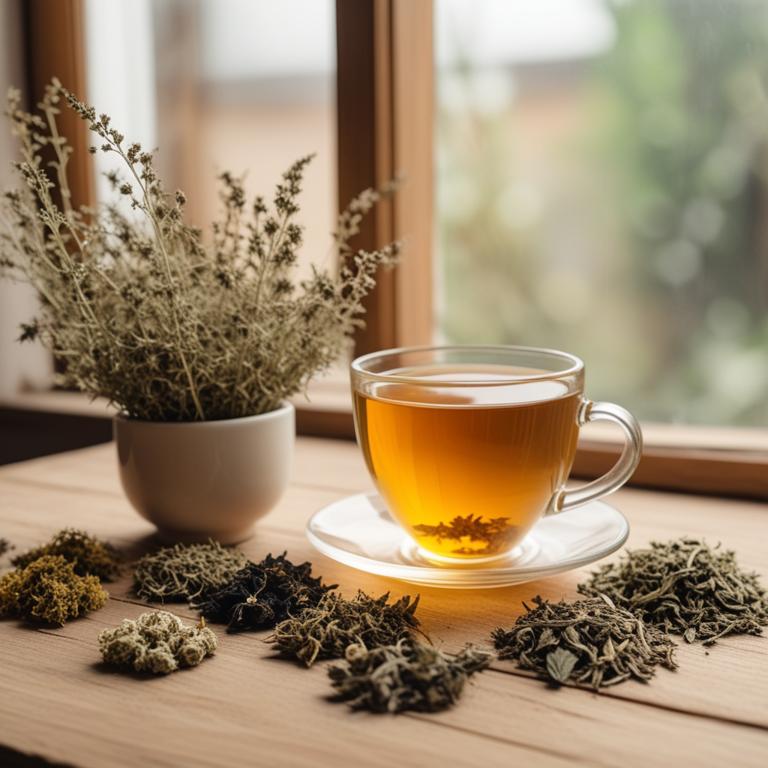
Cimicifuga racemosa teas contains the bioactive constituents triterpenoid saponins, including cimiracemoside and cimicifugoside, as well as phenolic acids.
These constituents have anti-inflammatory properties, which can help reduce pain and swelling associated with ovulation. The triterpenoid saponins in Cimicifuga racemosa tea have also been shown to inhibit the production of prostaglandins, hormone-like substances that can cause pain and cramping during ovulation. Additionally, the tea's anti-inflammatory properties may help reduce fluid retention and alleviate symptoms of bloating and discomfort.
The combination of these properties makes Cimicifuga racemosa tea a potential natural remedy for managing ovulation pain.
- Gather 1 cup of dried Cimicifuga racemosa root and 2 cups of boiling water in a heat-resistant cup.
- Steep the dried root in the boiling water for 5-7 minutes to allow the flavors to combine.
- Strain the mixture through a cheesecloth or a fine-mesh sieve into a separate cup to remove the root particles.
- Add 1 tablespoon of honey (optional) to the tea for sweetness, and stir well to dissolve.
- Drink 1/2 cup of the tea 2-3 times a day, as needed, to help manage ovulation pain.
5. Glycyrrhiza glabra
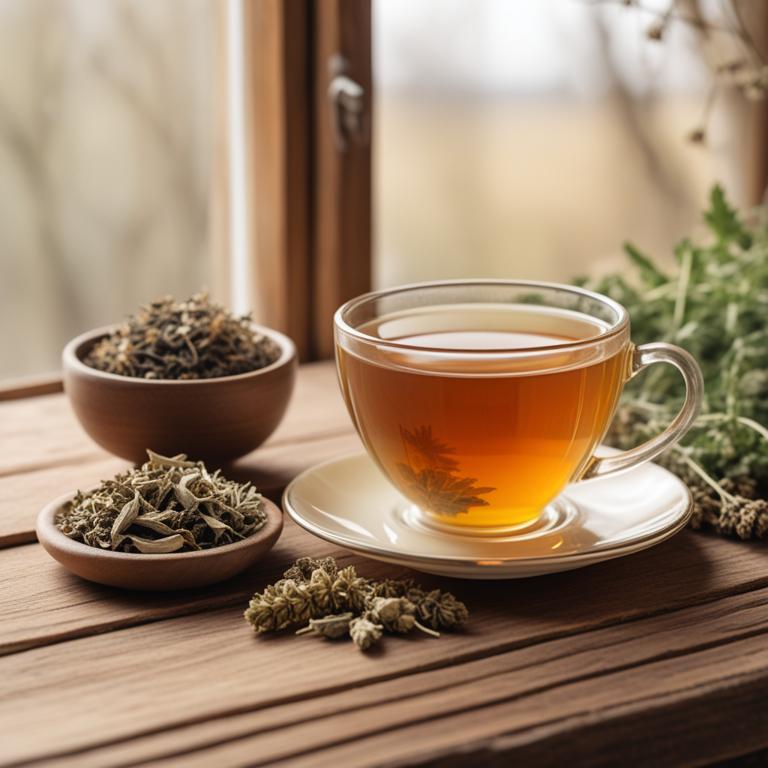
Glycyrrhiza glabra teas contains licorice root, which has been used for centuries to help with menstrual issues.
This tea is rich in glycyrrhizin, a compound that has anti-inflammatory properties, helping to reduce pain and discomfort associated with ovulation. The flavonoids present in licorice root, such as isoflavones and lignans, have been shown to have a positive effect on hormone regulation and can help alleviate symptoms of ovulation pain. The anti-inflammatory and antispasmodic properties of glycyrrhizin also help to relax the uterine muscles, which can contract and cause pain during ovulation.
By reducing inflammation and relaxing the uterine muscles, Glycyrrhiza glabra teas may help to alleviate ovulation pain.
- Gather 1 tablespoon of dried Glycyrrhiza glabra root, 1 cup of boiling water, and a tea infuser.
- Put the dried root in the tea infuser.
- Pour the boiling water over the root and let it steep for 5-7 minutes.
- Strain the tea and discard the root. You can add honey to taste.
- Drink the tea 2-3 times a day to help relieve ovulation pain.
6. Angelica archangelica
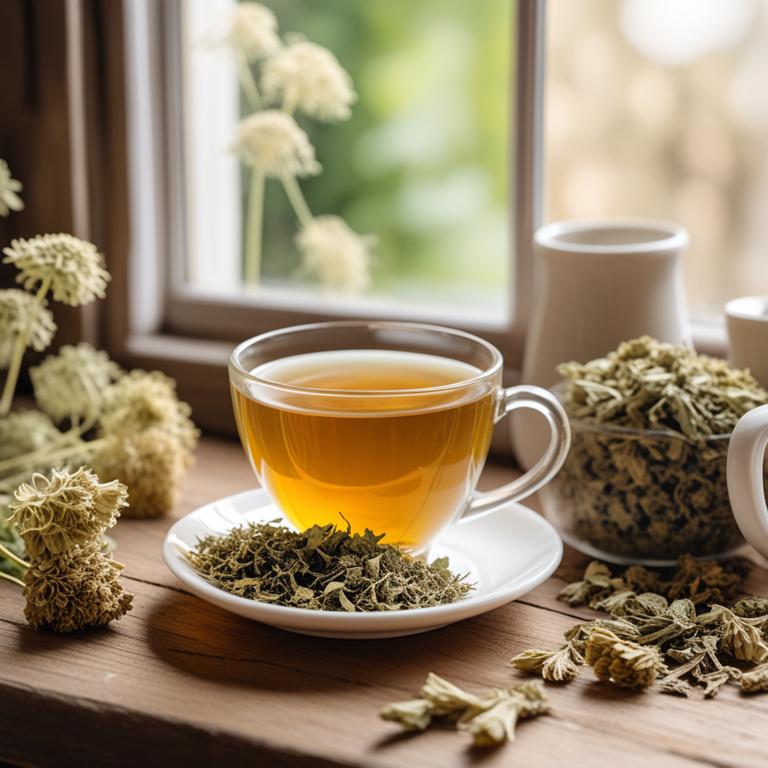
Angelica archangelica teas contains angelan and sesquiterpene compounds, which have anti-inflammatory properties that help ease cramps associated with ovulation pain.
The sesquiterpene compounds, including angelan and bergamotene, have been shown to relax uterine muscles, reducing spasms and discomfort. Angelica archangelica teas also contain ferulic acid, a compound with antioxidant properties that may help reduce inflammation and promote a healthy hormonal balance. The anti-inflammatory and antispasmodic properties of angelica archangelica teas can help alleviate the pain and discomfort experienced during ovulation.
Regular consumption of angelica archangelica teas may also help regulate menstrual cycles and promote a balance of hormones.
- Gather 1 cup of fresh Angelica archangelica roots or dried Angelica archangelica root powder.
- Use 1 tablespoon of Angelica archangelica roots or 2 tablespoons of dried Angelica archangelica root powder for every cup of boiling water.
- Heat 1 cup of water and bring it to a boil. Remove from heat.
- Add the Angelica archangelica roots or powder to the hot water. Let it steep for 5-7 minutes.
- Strain the liquid and drink as a tea. Repeat as needed for ovulation pain relief.
7. Ginkgo biloba
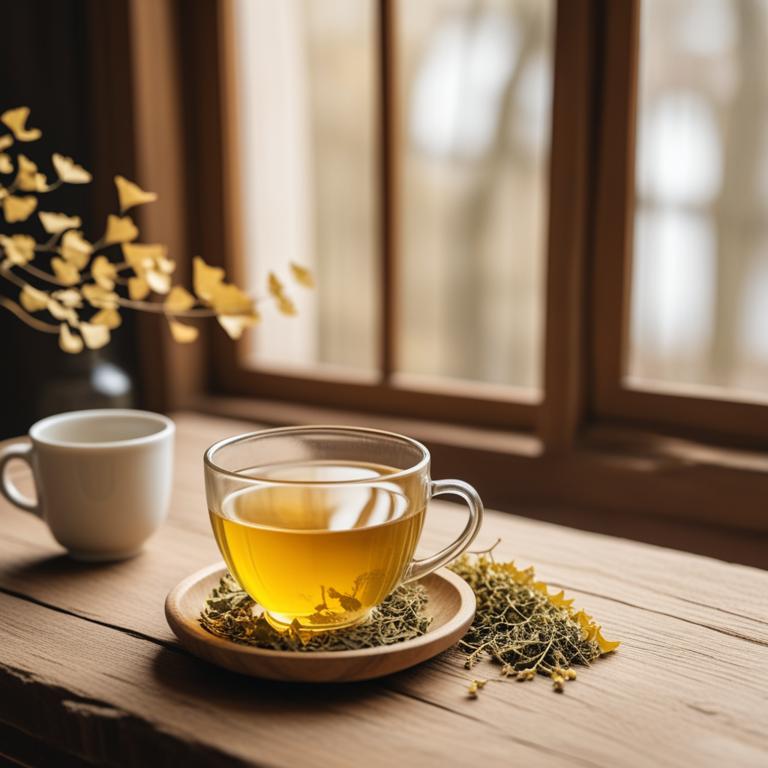
Ginkgo biloba teas contains bioactive constituents like flavonoids and terpenoids.
These compounds help to improve blood flow to the pelvic area and reduce inflammation, which can contribute to ovulation pain. The flavonoids, particularly quercetin and kaempferol, have anti-inflammatory properties that can help to alleviate pain and discomfort. The terpenoids, such as ginkgolides and bilobalide, have antioxidant effects that can help to protect the body from oxidative stress, which can contribute to pain and inflammation.
By reducing inflammation and improving blood flow, Ginkgo biloba teas may help to alleviate ovulation pain and promote a healthy menstrual cycle.
- Gather 1 cup of water and 1 teaspoon of dried Ginkgo biloba leaves.
- Boil the water in a pot and let it cool for 1 minute.
- Add 1 teaspoon of dried Ginkgo biloba leaves to the cooled water.
- Steep the mixture for 5-7 minutes, then strain it with a tea strainer.
- Drink the Ginkgo biloba tea 2-3 times a day for relief from ovulation pain.
8. Angelica sinensis
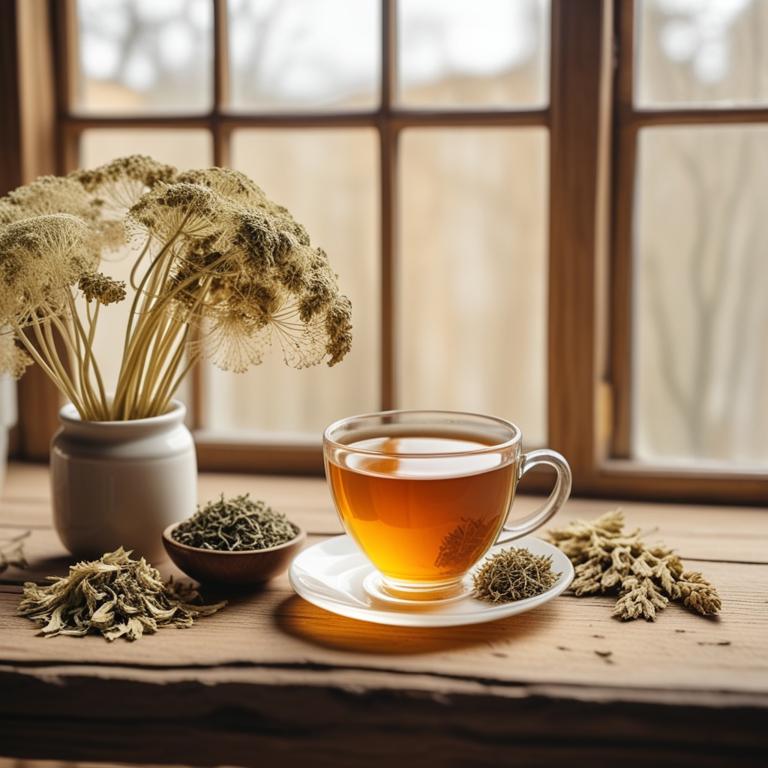
Angelica sinensis teas contains a unique combination of bioactive constituents, including ferulic acid, isoflavones, and coumarins.
These compounds have potent anti-inflammatory and antioxidant properties, which help to ease ovulation pain by reducing inflammation and promoting relaxation. The ferulic acid in Angelica sinensis teas has been shown to inhibit the production of prostaglandins, hormone-like substances that can cause pain and discomfort during ovulation. Additionally, the coumarins present in the tea have a sedative effect, which can help to calm the body and mind, reducing the severity of ovulation pain.
By reducing inflammation and promoting relaxation, Angelica sinensis teas provides a natural and effective way to alleviate ovulation pain.
- Gather 2 tablespoons of dried Angelica sinensis root and 1 cup of boiling water in a tea infuser or a heat-resistant cup.
- Steep the Angelica sinensis root in the boiling water for 5-7 minutes.
- Strain the tea into another cup using the tea infuser or a fine-mesh sieve.
- Add 1 tablespoon of honey to the tea, if desired, to sweeten it.
- Drink the tea 2-3 times a day to help alleviate ovulation pain.
9. Vitex agnus-castus

Vitex agnus-castus teas contains bioactive constituents like flavonoids, iridoids, and phenolic acids, which contribute to its therapeutic properties.
The tea has a positive effect on ovulation pain due to its ability to regulate hormonal imbalances, particularly the levels of luteinizing hormone (LH) and follicle-stimulating hormone (FSH). The herb's flavonoids and iridoids exhibit anti-inflammatory and antioxidant properties, which help reduce inflammation and oxidative stress associated with ovulation pain. The phenolic acids in Vitex agnus-castus tea also have a regulatory effect on prostaglandins, hormone-like substances that contribute to pain and inflammation.
By modulating the body's hormonal balance and reducing inflammation, Vitex agnus-castus tea provides relief from ovulation pain.
- Gather 1 cup of dried Vitex agnus-castus flowers and 1 cup of boiling water.
- Steep the dried flowers in boiling water for 5-7 minutes, then strain the mixture.
- Measure 2 tablespoons of honey and mix it with the strained Vitex tea.
- Add 1 cup of cold water to the tea and stir well.
- Drink the tea 2-3 times a day to help alleviate ovulation pain and discomfort.